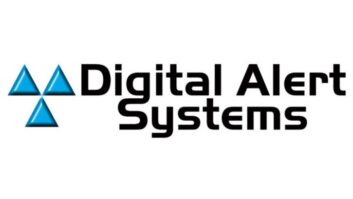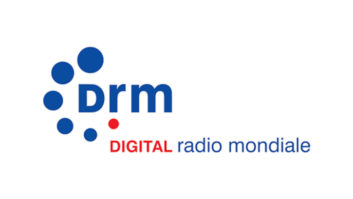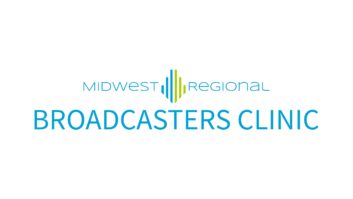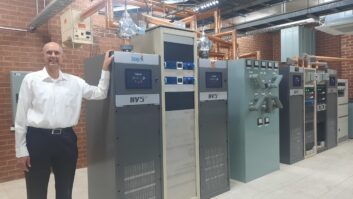
The U.S. broadcast industry, it seems, wants AM radio stations to have the option to turn on all-digital transmissions, if they wish, on a station-by-station basis.
Comments filed with the FCC by major broadcast entities generally have been supportive. This article provides a sampling, collected by Radio World. Comments to the FCC about all-digital AM (Docket MB 19-311) were due March 9. Reply comments were due April 6.
— HD Radio developer Xperi said the technology provides many benefits over traditional analog radio, including crystal clear, static-free sound, multicasting, enhanced metadata — including artist, song title, and album information — traffic services, and enhanced digital emergency alerts.
The company is offering AM stations a license to use all-digital technology in perpetuity without any initial or ongoing licensing fees.
“Nevertheless, the cost to upgrade a station’s facilities to accommodate all-digital operations will vary by station. By providing broadcasters with the flexibility to transition if they want and when they want, however, the commission will facilitate a transition driven by market forces rather than regulatory fiat.”
Xperi said that because all-digital signals have less spectral occupancy, the potential for interference is greatly reduced as compared to hybrid mode. “Moreover, the HD Radio system was designed to operate in a mixed environment of analog, hybrid and all-digital stations, with all-digital signals designed to protect analog and core digital services within their protected contours.”
— Hubbard Radio has been testing all-digital AM broadcasting on its WWFD(AM) outside Washington, D.C., since July 2018. According to the broadcaster, the ride has been mostly a smooth one.
Hubbard says the MA3 signal of WWFD, which operates in full-time all-digital under special temporary authority, has proven to be much more robust than the hybrid mode of HD AM broadcasting, and with improved signal coverage. The company says it has received positive feedback from listeners about the fidelity and reliability of their signal.
“In Hubbard’s experience, the data conclusively confirm that all-digital MA3 operation provides an improved, consistently high-quality listener experience, in terms of audio fidelity and signal robustness,” according to the filing.
The station, which broadcasts at 820 kHz, has seen ratings gains since launching the all-digital signal. “WWFD broadcasts an Adult Album Alternative music format. The station had no ratings in its home market of Frederick, Md., for the five years it was an analog station with that format, but now that it is operating in MA3, the station is ranked by Nielsen in the market,” it wrote.
Hubbard is using the MA3 technology to transmit auxiliary data and metadata to listeners of WWFD, it says. “The secondary and tertiary carriers of WWFD can provide stereo audio information, data services such as station logo, album artwork, and other artist experience information, as well as multicast channels.”
In addition, earlier reliability issues with the secondary and tertiary carriers on WWFD have been resolved, Hubbard said. The station fixed the issues by “installing a replacement transmitter, a Nautel NX-5, with a pulse duration modulator that runs at a sufficiently high rate to pass the secondary and tertiary carriers, allowing the full MA3 waveform to be transmitted.”
WWFD in December tested an HD-2 multicast channel, according to Hubbard, transmitting musical track data and a station logo image as well. Future versions of enhanced EAS alerting will use the secondary and tertiary carriers to supplement the data transmitted on the Primary IBOC Data Service Logical Channel (“PIDS”) carriers.
“Hubbard believes that these continued improvements in the MA3 delivery system will mitigate any concerns about secondary and tertiary carrier issues, and that these technologies will continue to be expanded to better serve listeners,” it stated.
Hubbard believes all-digital AM technology will help WWFD compete in the dashboard of the connected car. “Trends in vehicle entertainment system receiver designs are converging on ‘tuning by visual metadata,’ where listeners select an audio program by pressing a thumbnail image of the desired program. MA3 allows AM broadcasters to have both aural and visual parity with other broadcast services in the automobile dashboard.”
In conclusion, Hubbard told the FCC the MA3 mode provides “far more manageable solutions” to any unintended interference with neighboring analog AM stations in the band when compared to the MA1 mode. In fact, WWFD “has never received any interference complaints from co-channel or adjacent channel stations,” it reported.
— National Public Radio “generally supports” the voluntary transition but believes the commission needs to go further on how it would handle interference complaints from neighboring analog stations in the band.
About 80 AM public radio stations are affiliated with NPR or receive operational funding from the Corporation for Public Broadcasting, including WNYC(AM) in New York City.
NPR says it has significant interest in any measures to help AM broadcasters better serve the public by improving the listening experience.
“Facilitating the expansion of HD Radio and its additional functionality for program and public safety information and services would serve the public interest, provided the transition to all-digital HD Radio operation does not cause harmful interference,” NPR wrote. “As it has in the past, NPR supports the expansion of HD Radio, but not at the expense of current analog AM service.”
NPR goes on to note the “concerns of others in the FCC record” over the potential for interference. “NPR urges it to collaborate with industry to monitor both the progress of stations that adopt all-digital AM and the effects of such deployment on all-digital stations’ analog neighbors.
“Second, NPR suggests that the commission consider periodically disclosing general information about the number of stations transmitting all-digital AM signals, the number and type of interference complaints it receives, and how such complaints were resolved to help stakeholders understand the full landscape,” NPR commented.
NPR acknowledges certain FCC policies might prevent it from disclosing specific facts about complaints it receives.
“Finally, NPR encourages the commission to issue a public notice on or about the first and second anniversaries of the effective date of any rules it adopts here, seeking comment on the positive and/or negative effects of any all-digital AM deployments.”
— A group of smaller-market AM owners support the idea and cautioned the commission against repeating the AM stereo situation of the 1980s.
The collection of broadcasters — in all 25 licensees — consists of groups such as East Texas Broadcasting and Georgia-Carolina Broadcasting that typically operate AM stations in smaller markets.
The comments were submitted by attorney John Garziglia of Womble Bond Dickinson LLP. They say broadcasters can control their own destiny by deciding whether to invest in all-digital AM technology. They cite the “significant” harm to AM listenership from interference and reception issues, and the availability of higher-fidelity alternatives.
“The AM broadcasters believe that allowing for all-digital AM operations is one means by which this listener erosion may be stemmed in the future. The undersigned AM broadcasters ask the FCC to make the all-digital AM mode of broadcasting available to them to use at their option.”
The group recognizes that listenership could potentially drop since people with analog radios will be unable to receive the new signals, but they argue that it is broadcasters, not the FCC, that can best discern what mode of broadcasting is most likely to attract audiences now and in the future.
All-digital AM operation should be allowed “both day and night,” the broadcasters say. They also are asking the FCC for some flexibility to be built into the new rules: “That any decision by an AM station to operate in an all-digital mode is discretionary and reversible, so that no station is required to operate in an all-digital mode, nor is any station who chooses to do so locked into that mode of operation.”
But the broadcasters said that mistakes made during the launch of AM stereo in the mid to late 1980s should be avoided.
“The undersigned well-remember the listener and broadcaster confusion that surrounded the failure to adopt a specific AM stereo standard some decades ago, and have no wish to foist that uncertainty once again on the public and broadcasters,” they wrote. “Therefore, the undersigned AM broadcasters fully support the FCC’s decision to reject in this proceeding any comments advocating for a different AM digital mode of broadcasting.”
Digital Radio Mondiale has asked the FCC to allow DRM to be considered for use in the United States. The FCC has stated in a footnote to the current NPRM that it declines to reconsider the choice of IBOC HD Radio as the U.S. standard.
—The California and Missouri Broadcasters Associations urged the FCC to adopt the MA3 digital operation rules as promptly as possible. They believe that this proceeding is especially important to small towns and diverse communities where local AM remains the most relevant source of local news and information.
“AM broadcasters provide unique, community-based programming that distinguish them from other media sources in an increasingly competitive mass media market,” they stated. “Many local communities still have but one ‘community-oriented’ resource: their AM station.”
The groups also said that the MA3 mode can produce a respectable HD2 signal that has the ability to support a second local translator with a second, independent stream of programming, a benefit that Xperi has recently been emphasizing.
“A small town’s single AM station can, therefore, effectively become a second local station supporting a second FM signal, multiplying the local sources of news and entertainment,” the associations wrote. “[A]ll-digital AM technology will improve the ability of diverse communities to better receive specialized programming tailored to their needs.”







